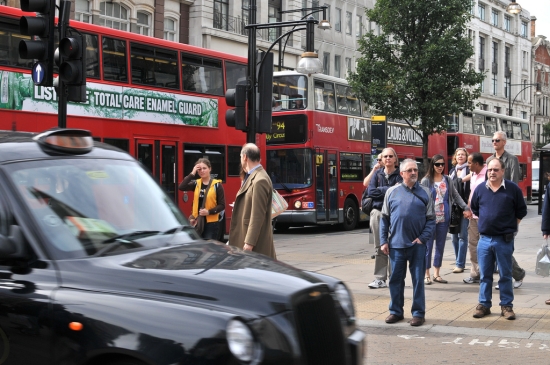Oxford Street,London, one of the busiest shopping streets in the world. At the east end, Primark has opened a giant new 80,000 sq. ft. store, at the other end, Zara is opening a flagship store, its fourth store on Oxford Street, in the biggest new development on the street for 50 years.

Somewhere in the middle of this busy shopping street is Marks & Spencer.
The changing shape ofOxford Streetin 2012 is a small representation of the fiercely competitive fashion market and the challenges M&S face.
At one end of the clothing sector, it is being squeezed by the unstoppable Primark, whose sales are up 17 per cent year-on-year and whose low prices have resonated with customers during the double-dip recession. The dynamic design of the company’s new store divulges a retailer growing in stature and confidence and gradually moving upmarket.
At the higher end of the market, Zara is establishing a significant presence. Its flagship store in Park House on Oxford Street, where rents are increasing to around £700 per sq. ft. underlines its determination. Zara is backed by the biggest fashion retailer in the world, Inditex Group, and its internal 200-strong design team allows its shops to move quickly with the fashion world.
Yet in contrast, the M&S flagship store located on Marble Arch appears drab and lacklustre. At a time of growing competition, critics say M&S has retreated to the safe ground of womenswear, stocking items that have been popular in earlier years. At the same time stock management blunders that have left some of its stores short of the best-selling items.
The result of theOxford Streetbattle is that Zara and Primark are seizing M&S customers.
The 128-year-old fashion and food retailer said profits dropped 9.6 per cent to £290m in the six months to September 29.
Marc Bolland, chief executive of Marks & Spencer, said recent trading has been “volatile”.
He further added: “This, coupled with continuing pressure on consumers’ disposable incomes, makes us cautious about the outlook for the rest of this year. However, we are well set up for the Christmas trading period.”
Regardless of the drop in profits, the results are likely to be well received by the stock market because the decline is somewhat smaller than projected and sales improved in the second quarter of the year.
In the three months to June 30, M&S reported a jaw dropping 6.8 per cent fall in like-for-like sales in general goods, including clothing, as it faced strong competition on the high street.
On the other hand, in the second quarter of its financial year to September 29, which included the 2012 Olympic and Paralympics Games inLondon, the fall in sales was cut to 1.8 per cent.
M&S’s food business continued to grow throughout the half-year with like-for-like sales of 1.1 per cent. International sales increased by 3.6 per cent.
Mr Bolland continued: “We are pleased to report a better performance across the business in the second quarter.
“We took steps to address the short term merchandising issues in general merchandise and as a result, we delivered an improved performance. Food outperformed the market on a like-for-like basis.
“As we approach the all-important Christmas period, we have better than ever Christmas products, to help our customers enjoy a special Christmas at home.”
M&S held its interim share at 6.2 per cent. The share is worth £99m in total and will be paid on January 11, 2013.
Previous Post
Poor High Street Sales Trend Bucked by Primark